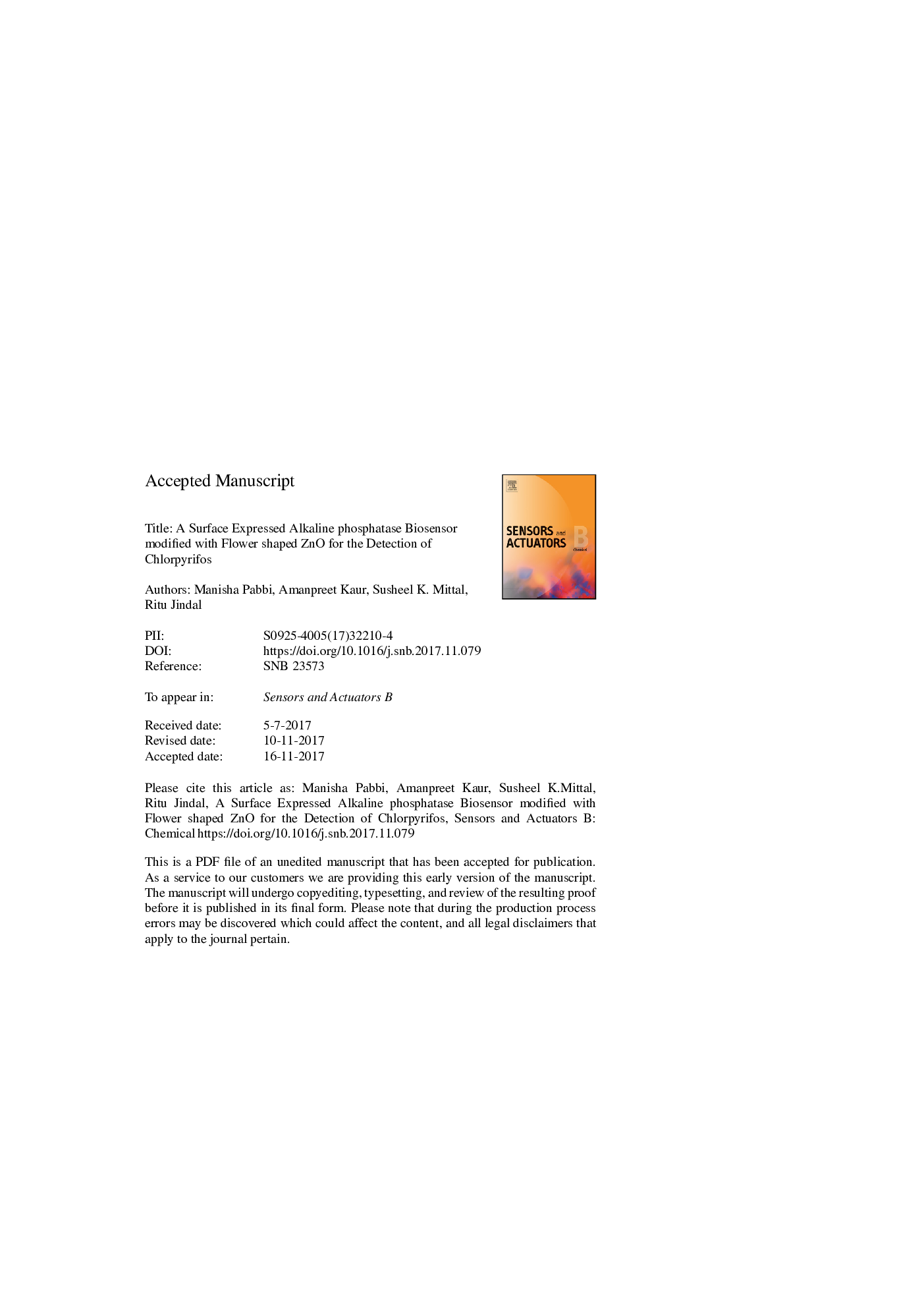| Article ID | Journal | Published Year | Pages | File Type |
|---|---|---|---|---|
| 7141083 | Sensors and Actuators B: Chemical | 2018 | 34 Pages |
Abstract
A simple and rapid Chlorella sp. surface expressed alkaline phosphatase (AP-algae) biosensor modified with flower shaped ZnO nanoparticles for the determination of chlorpyrifos in an aqueous medium was developed. The detection principle was based on the inhibition of AP-algae in presence of chlorpyrifos. Enzyme would dephosphorylate the phosphate monoester of substrate 2-phospho-l-ascorbic acid to release l-ascorbic acid, which was monitored using voltammetric and ISFET techniques. The presence of pesticide would inhibit AP-algae enzyme activity and hence the current magnitude decreases. The decrease in current is quantitative in nature and used for determination of concentration of the pesticide. Flower shape ZnO nanoparticles not only provide surface for adsorption of AP-algae for better immobilization but also increases electron-transfer kinetics and sensitivity of the biosensor. The voltammetric and ISFET methods could measure chlorpyrifos in the linear concentration range from 10â9Â M to 10â1Â M and 10â10Â M to 10â3Â M, respectively, with nil interference from triazophos, malathion, acephate and some metal ions. Application aspects of the proposed biosensor were demonstrated using extracted soil samples and showed excellent reproducibility and reliability.
Related Topics
Physical Sciences and Engineering
Chemistry
Analytical Chemistry
Authors
Manisha Pabbi, Amanpreet Kaur, Susheel K. Mittal, Ritu Jindal,
